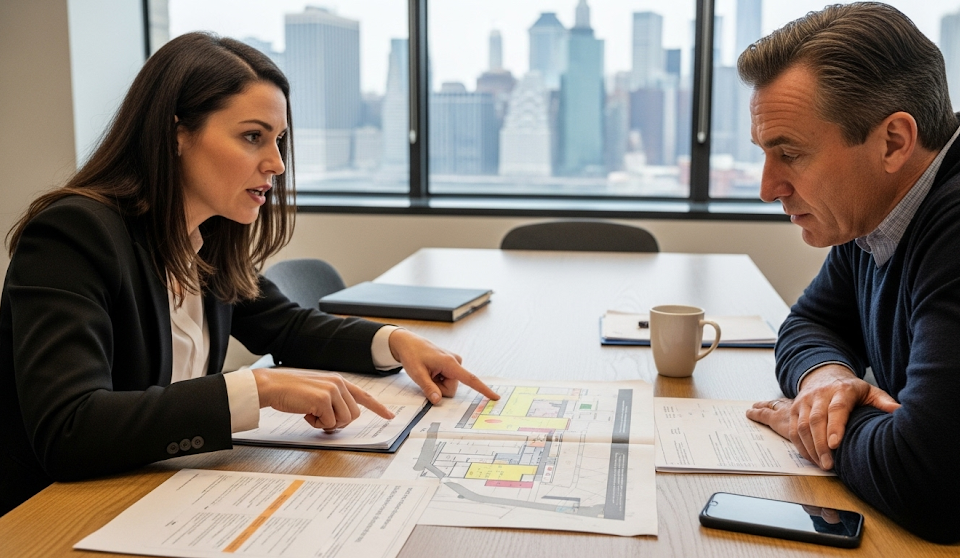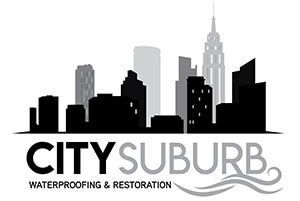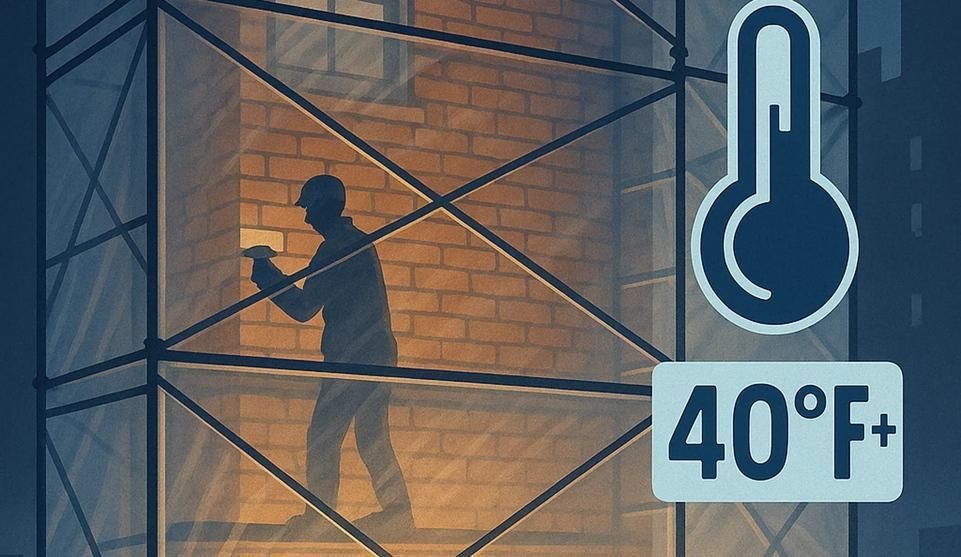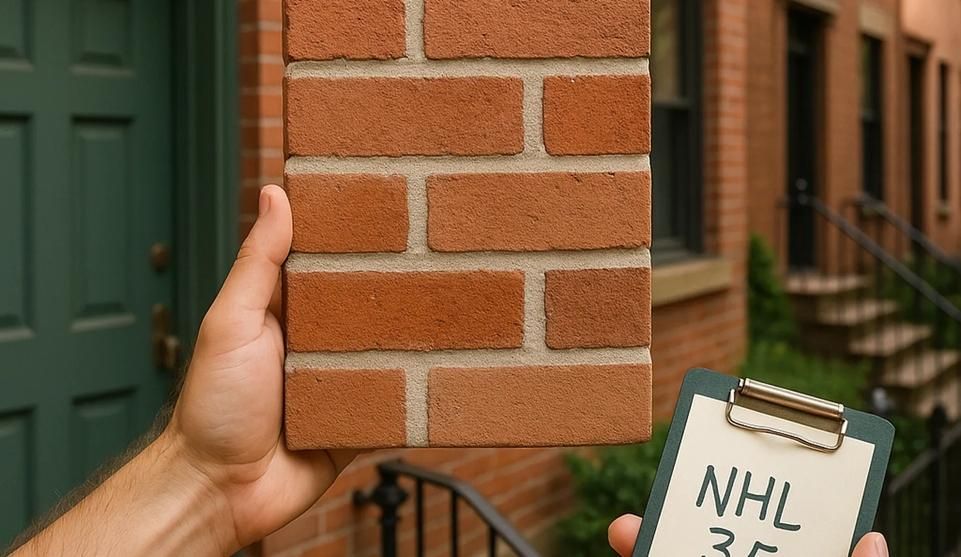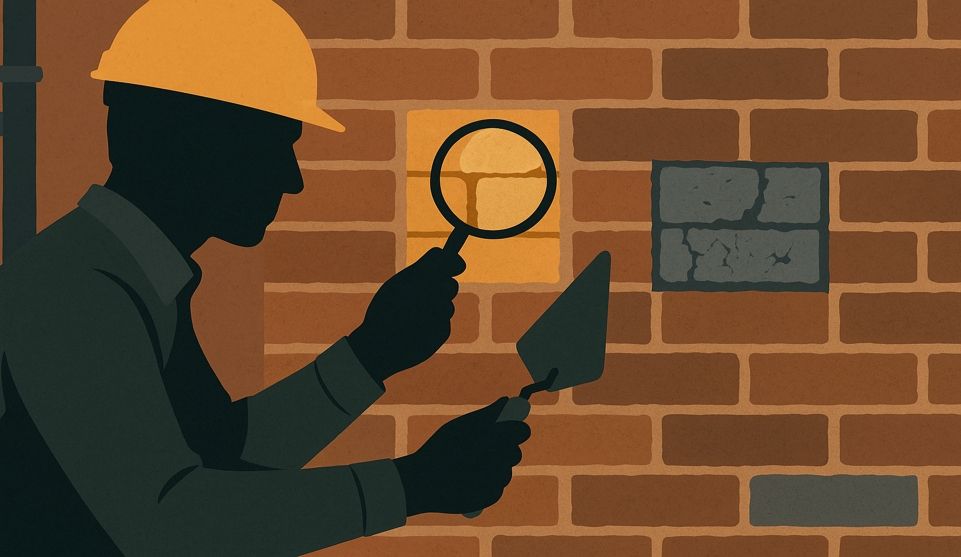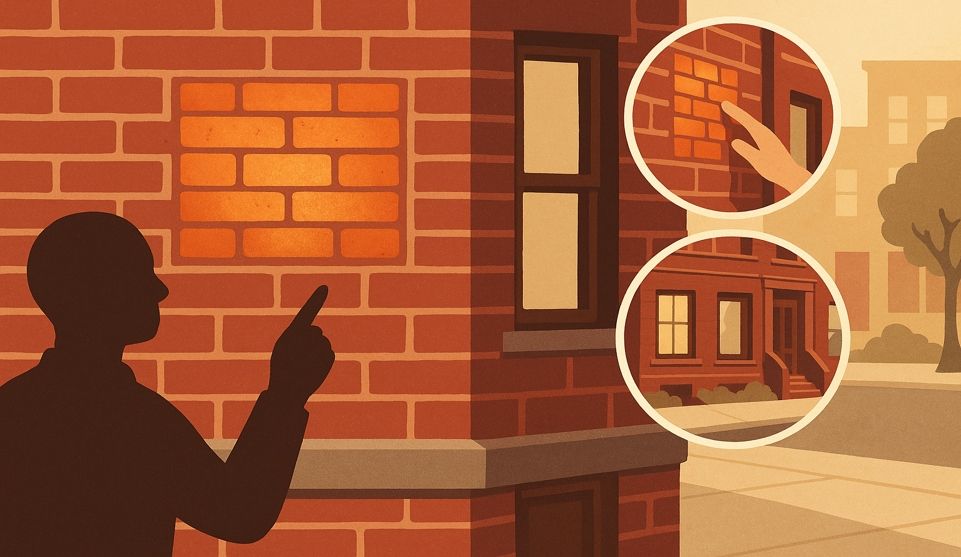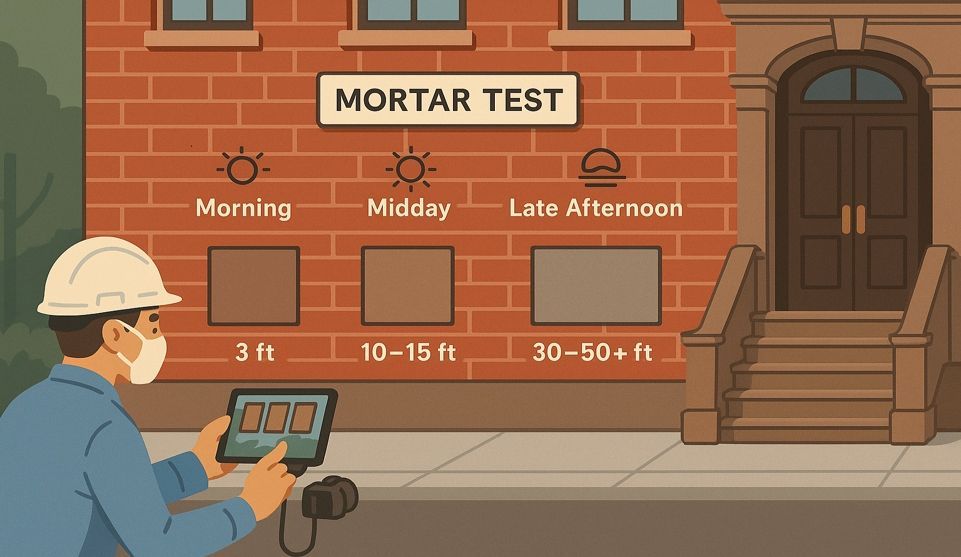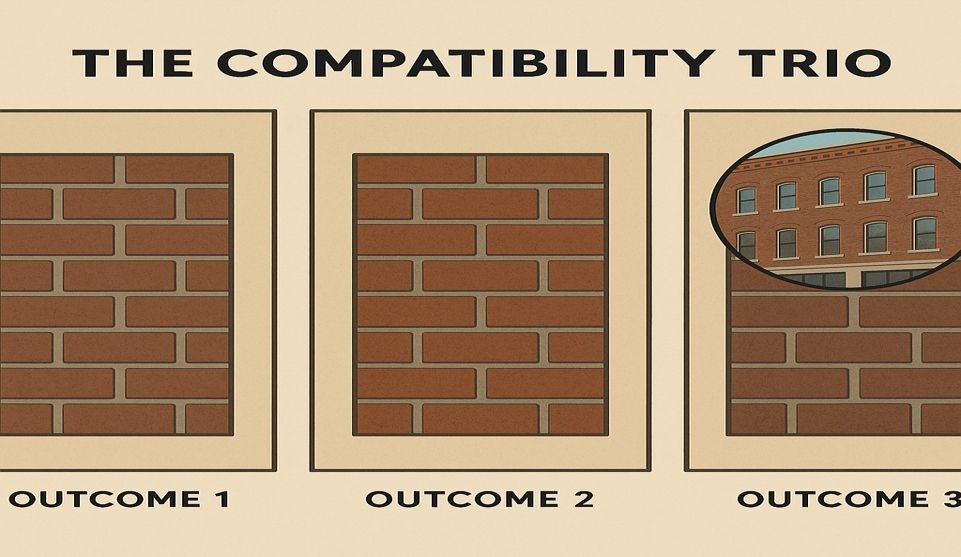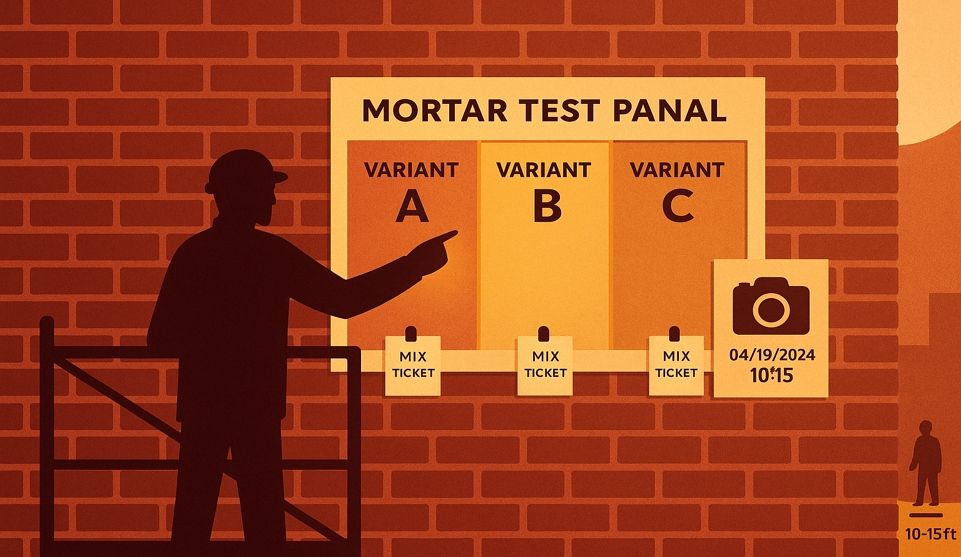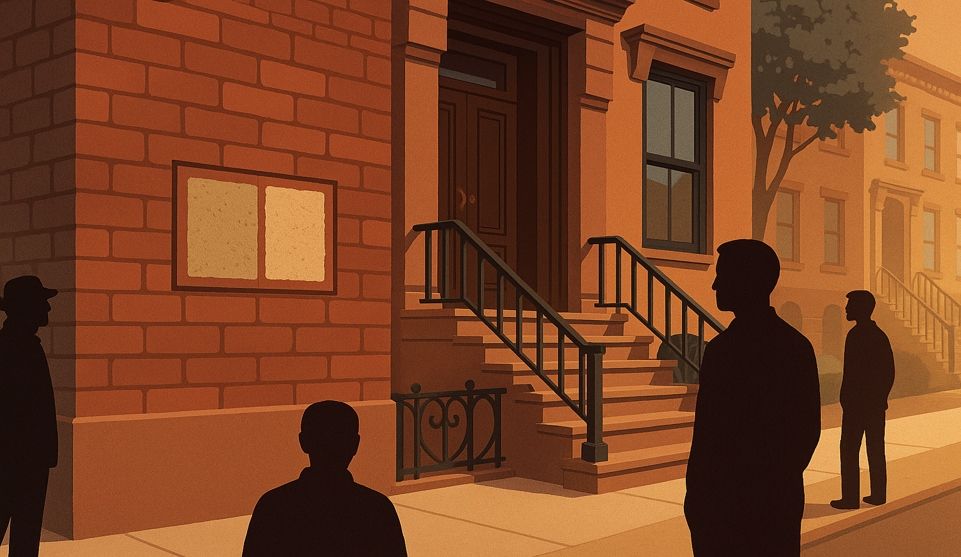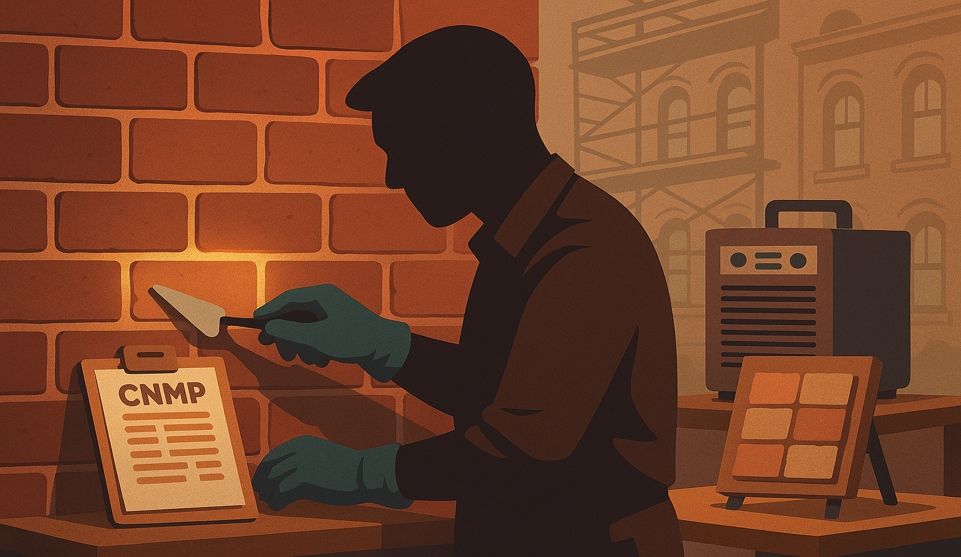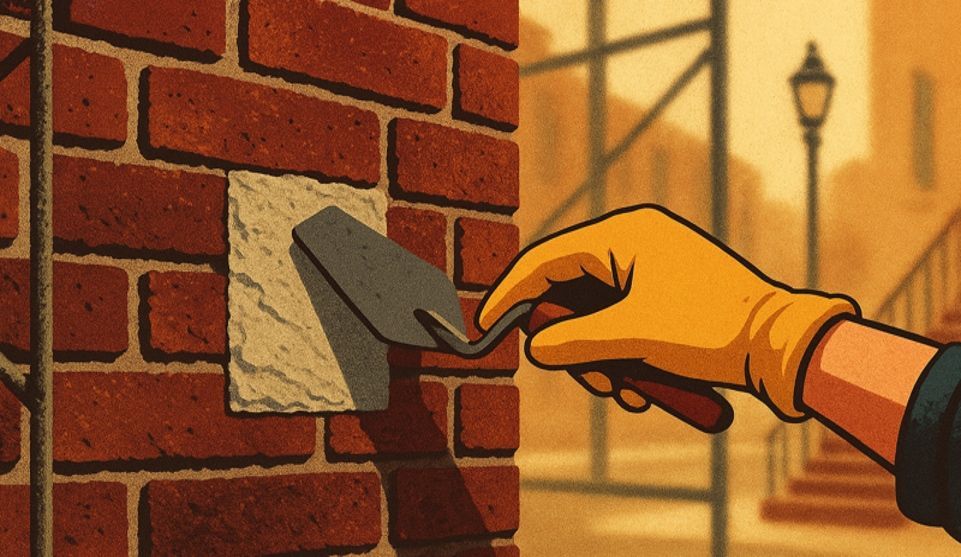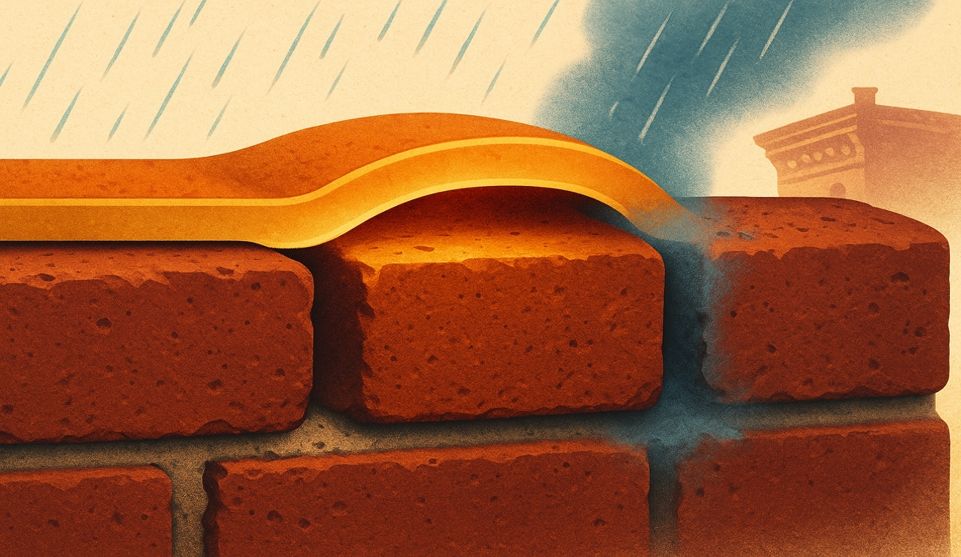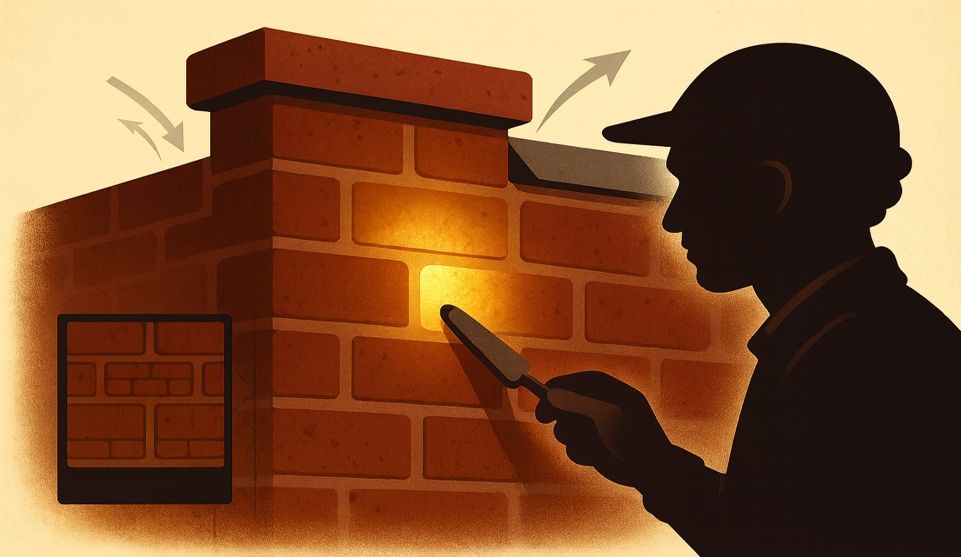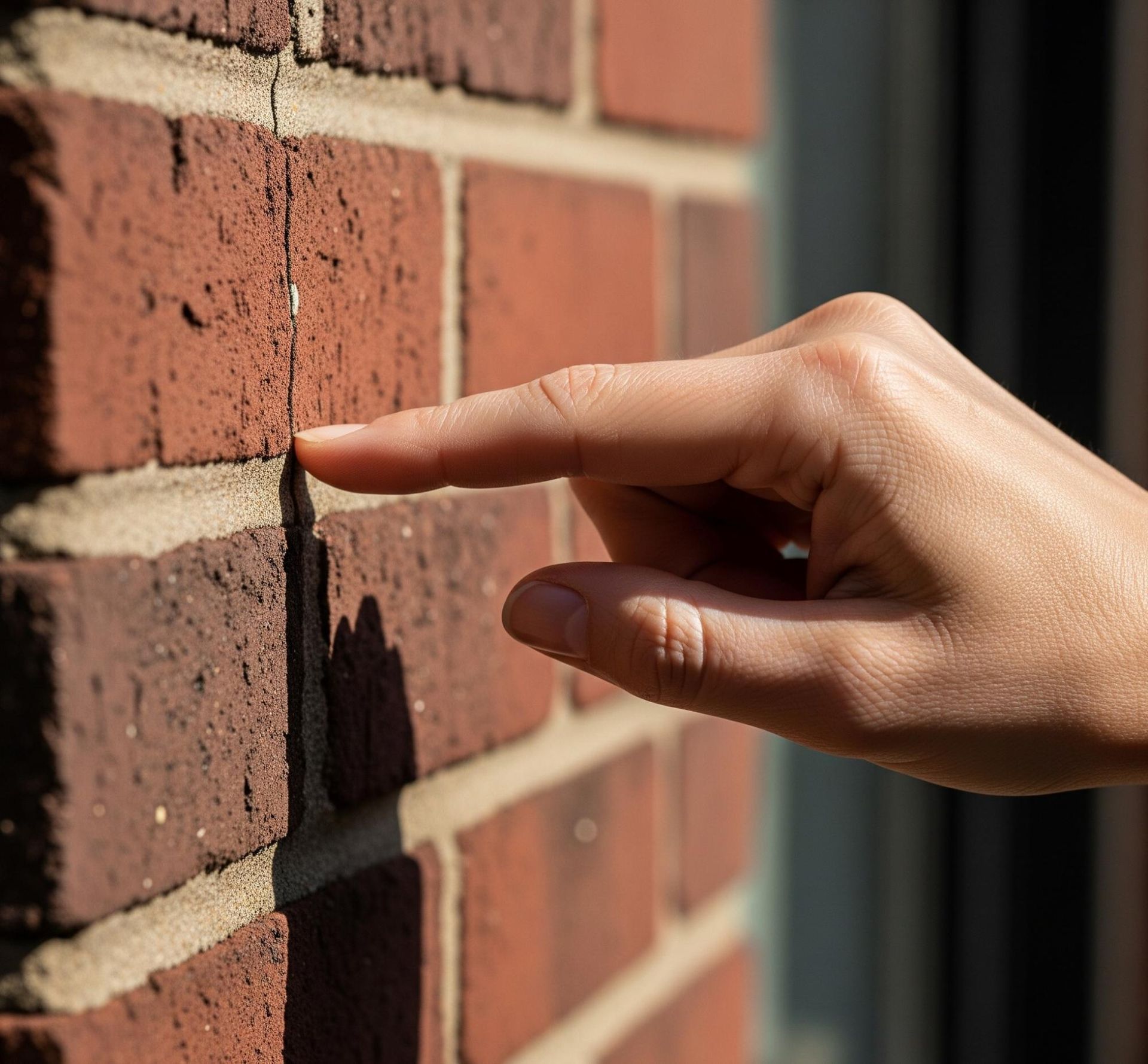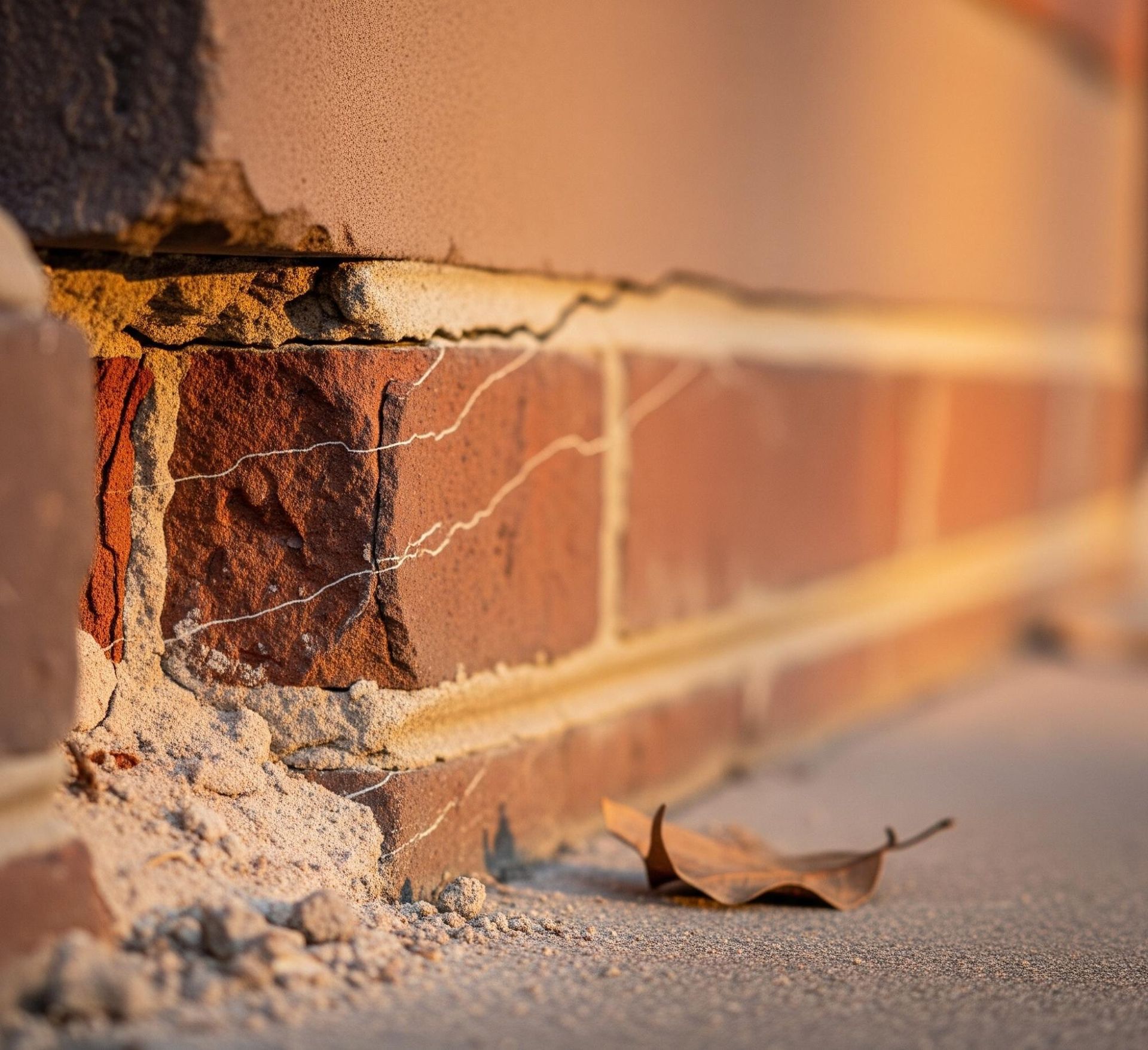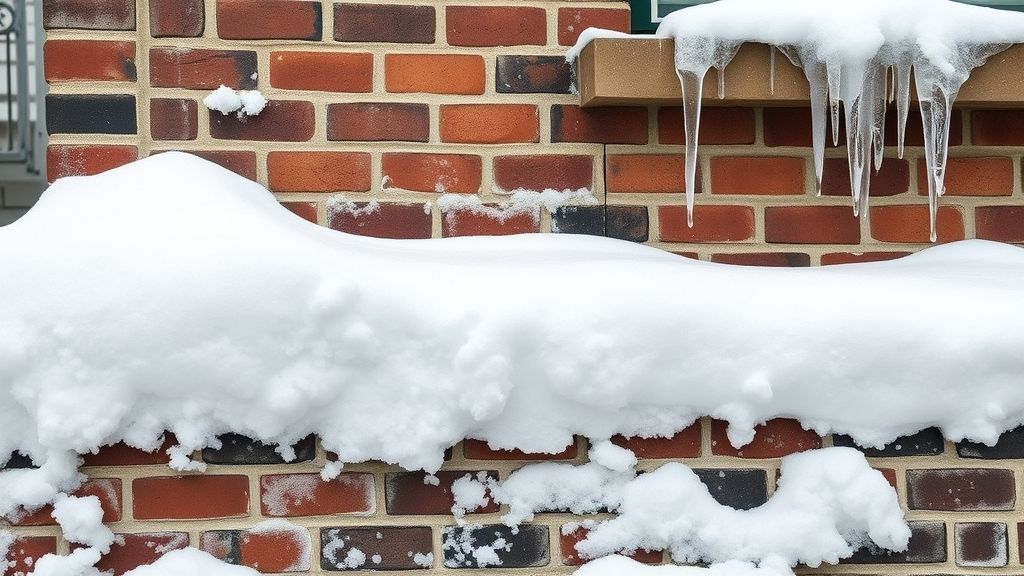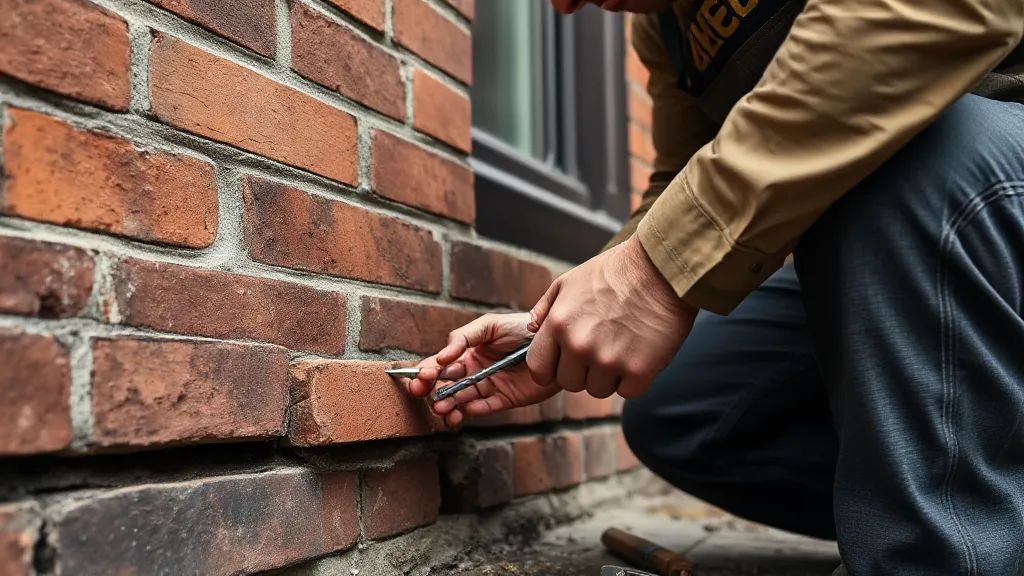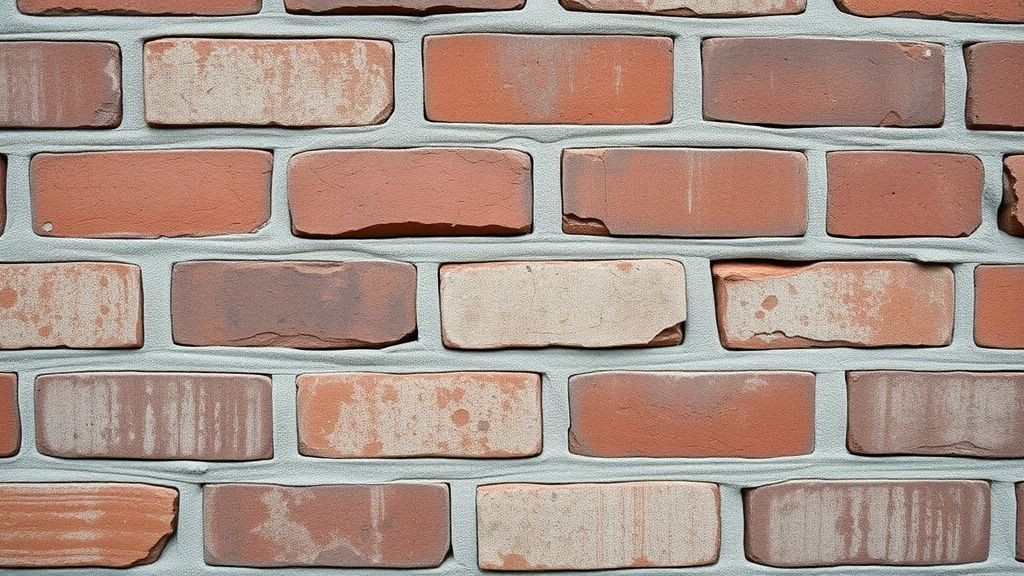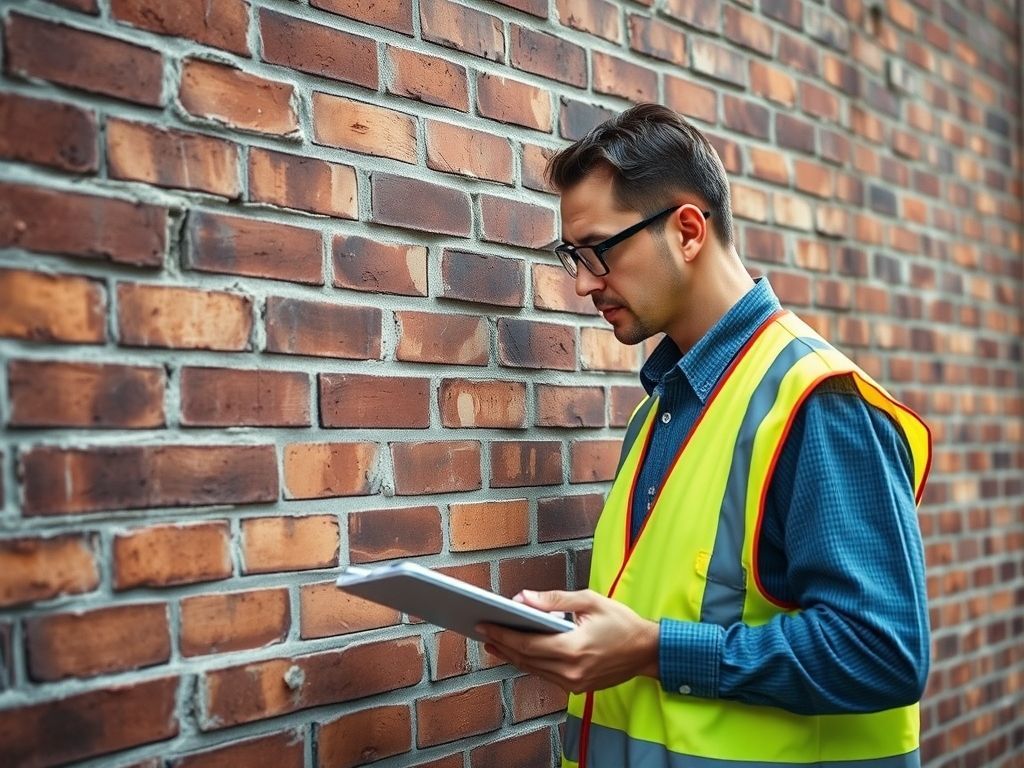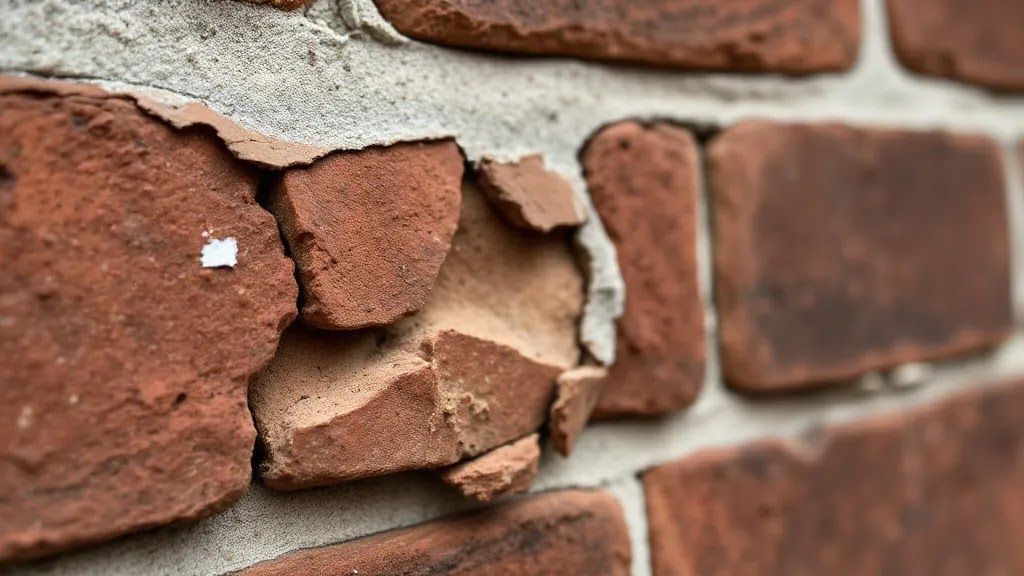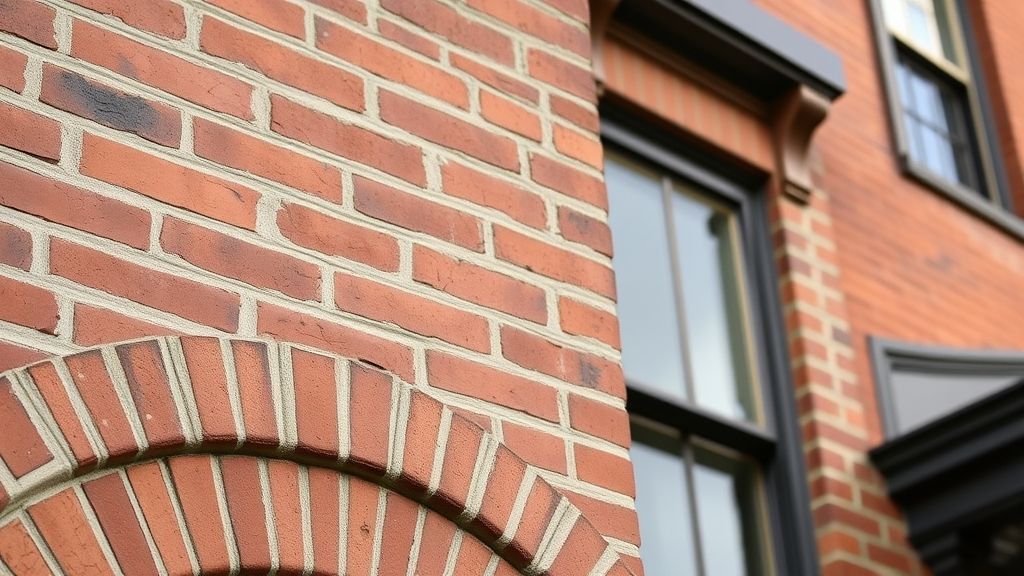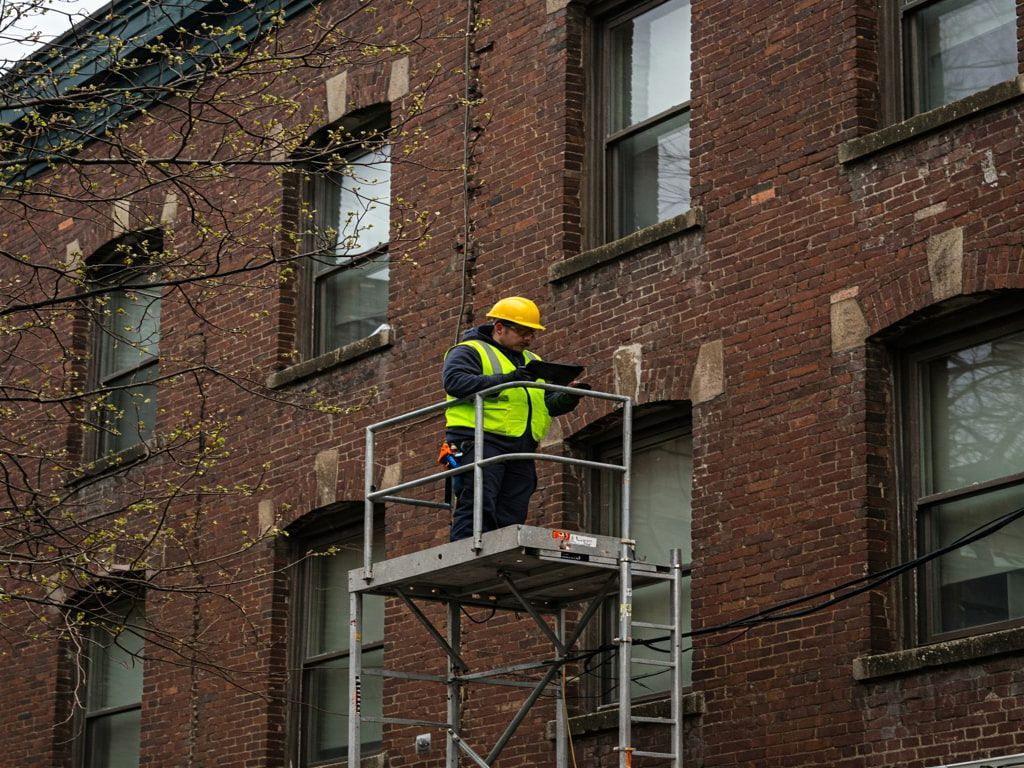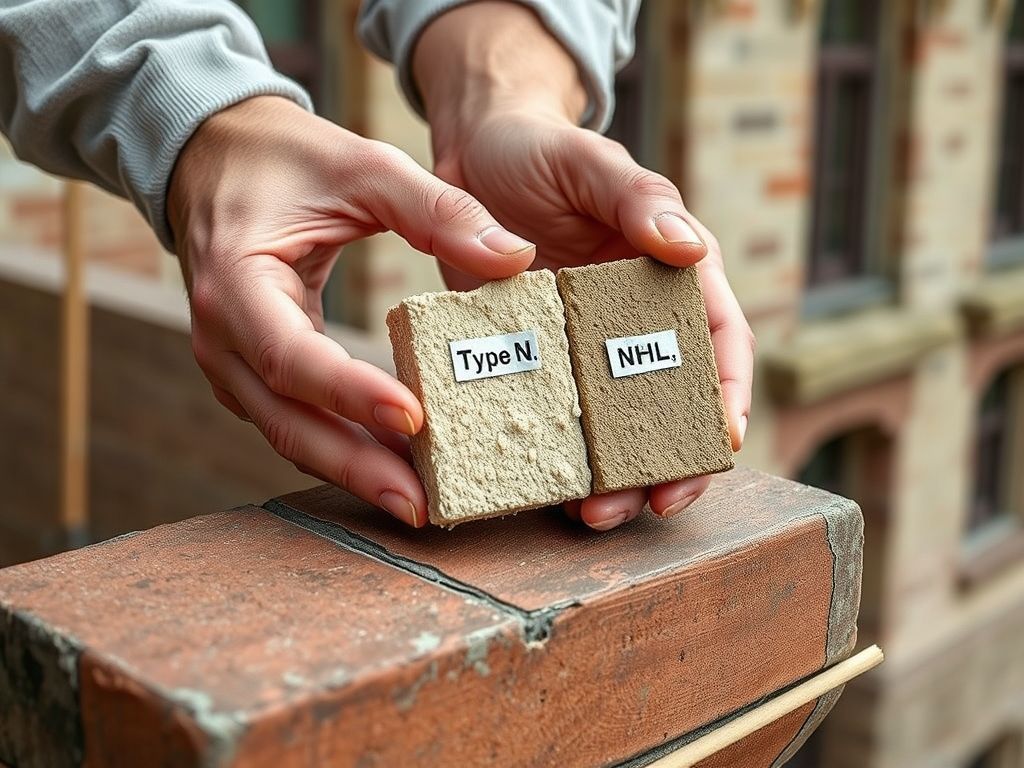Our Masonry Contractor Explains Why Sturdy Tuckpointing Is Critical
In our region, many of the buildings you will see (residential and commercial, newly built, and historical) are composed of stone or brick masonry of some type.
You may have heard the terms tuckpointing or repointing before, but what do they mean when it comes to a structure you have invested in?
What is tuckpointing, why is it vital to long-lasting brick masonry work, and how to tell when your home or business needs repointing?
Allow our licensed masonry contractors to answer these questions and bring you up to speed.
Tuckpointing Defined
Tuckpointing is the process of repairing damaged mortar joints to restore structural integrity.
Over time, weather, water, and more can cause the mortar -used to secure brick and stone into place-to crumble, crack, and decay. When this happens, you are at risk of losing a lot more than just the curb appeal of your building. You could be facing structural damage, internal damage, liability, and cave-ins, to name a few.
To prevent this from happening, we recommend regular maintenance inspections and taking care of repair and restoration work as soon as possible.
HOW LONG DOES MORTAR LAST AND WHAT CAUSES IT TO CRUMBLE?
Typically, mortar has a lifespan of between 20 and 30 years before showing significant signs of erosion.
As mentioned above, once this crumbling of the joints starts, repair work is needed right away to prevent further damage both to the structure and the internal components of your dwelling or place of business.
While weather and water are significant factors in the destruction of even the most meticulously installed mortars, you can also find yourself in need of mortar repairs if your structure suffers impact damage.
An example of this would be a motor vehicle accident that damages masonry on your home or place of business.
SIGNS YOUR BRICK MASONRY NEEDS TO BE REPOINTED
Hiring masonry contractors to perform an inspection is the best way to diagnose mortar issues and solve problems.
However, there are some signs you can search for that will tell you that your brick masonry needs to be repointed.
Here's what to be on the lookout for:
- Bricks that are bowed or bulging
- Vertical cracks in corner joints
- Crushed bricks
- Efflorescent residue has built up on bricks and appears white
- Corrosion or chipping on brick faces
- Damp spots on interior walls
- Mortar is missing to a depth of 6mm or more
It's essential to move quickly to address repair work. We'd like to stress this point because when mortar is missing, the likelihood of incurring more costly damage to the structure increases significantly and may leave you with an expensive rebuild as your only option.
Tuckpointing repairs are appropriate for stone and brick construction of all types, including, but not limited to:
- Fireplace masonry
- Chimney masonry
- Exterior masonry
- Interior masonry
- Landscape masonry
If you are unsure whether your structure is up to par or if you may require masonry work to solve or prevent problems, we suggest getting in touch with a masonry contractor to inquire about an estimate. Usually, these are given at no obligation on your behalf.
BENEFITS OF TUCKPOINTING WHEN PERFORMED BY PROFESSIONAL MASONS
Repointing is an essential part of the health and longevity of a building that includes masonry elements. Some of the significant benefits of tuckpointing include:
- Stops corrosion
- Prevents moisture penetration and leaks
- Increases the lifespan of the structure
- Structural stability can be restored with proper tuckpointing installation
- It's a cost-effective way to solve problems without having to rebuild
- Masonry work is restored to its required strength and stability
- The value of your home or business increases when masonry work is well maintained
While you could attempt this work yourself, there is nothing more reassuring than having licensed professionals onsite with everything needed to accomplish repairs safely.
Without the proper tools and equipment, you could be facing a time-consuming project that can quickly eclipse your budget and time requirements.
Keep in mind that you will also have to have repair work inspected, and if you attempt this work without training and experience, you could be at risk of starting back at square one if your inspector uncovers a problem.
HOW MASONRY INSTALLERS PERFORM TUCKPOINTING
When performing tuckpointing, the first step any established masonry installers will take is to plan ahead, with all safety considerations taken care of in advance.
This means your masonry contractor will take care of permits needed if historic brickwork is involved, easements required to access space on a neighbor's property during work, and take any steps necessary to protect your property.
Next, safety implements like temporary scaffolding will be installed, and prep work will begin.
Preparation starts with masonry workers removing spoiled mortar with specialized tools and machinery. Great care is taken to ensure damaged mortar is removed to the depth specified by our local building regulations.
From there, a customized mortar solution will be mixed and tested to ensure it matches the strength required for the job and the color of the original mortar.
Doing so ensures the new mortar is neither too strong (which could result in cracks) nor too weak to restore integrity and matches the original mortar's color for seamless finished results.
When applying the new mortar, your masonry experts will apply humidity to the surface to make sure bricks are moist enough to prevent them from absorbing the moisture content of the fresh mortar mixture.
The final step involves applying a simple seal to each joint and then waiting approximately 3 days for the drying process to be complete.
Once all new brickwork is adequately dried, it will need to be cleaned to be considered appropriately finished.
CONCLUSION: HIRING BRICK REPOINTING MASONRY CONTRACTORS IS YOUR BEST BET
Now that you know the importance of sturdy and long-lasting mortar and what signs to look for, you might be considering hiring brick repointing masonry contractors to perform an inspection. We recommend choosing an established masonry business with a long track record of delighted clients-like ours.
Did this article help you devise a plan to make your brick home or business last longer? Let us know the details by leaving a few words in the comments section below.
